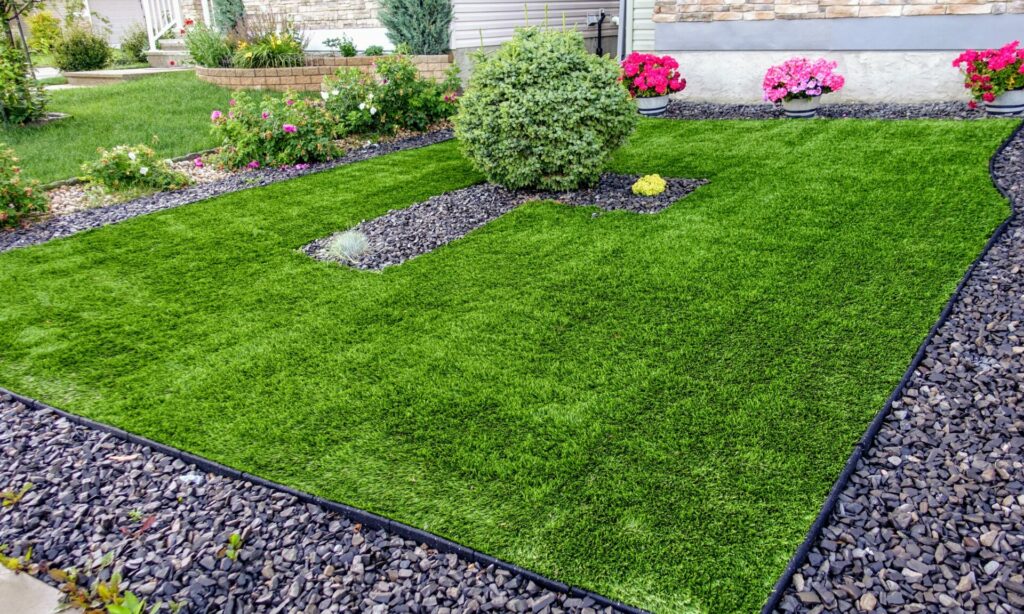The Environmental Impact of Artificial Turf vs. Natural Grass
When considering a lawn replacement or a new install, homeowners often find themselves torn between artificial turf and natural grass. While aesthetic and maintenance factors usually dominate the decision-making process, it’s equally important to consider the environmental impact. In this post, we at All American Turf Solutions aim to shed light on the environmental impact of both artificial turf and natural grass.

Water Usage: Saving a Precious Resource
One of the most significant environmental advantages of artificial turf over natural grass is water conservation. Natural grass lawns require regular watering, especially during dry seasons. According to the Environmental Protection Agency, outdoor water usage accounts for nearly 30% of total household water use on average, a significant portion of which goes towards maintaining lawns. On the other hand, artificial turf, like the kind offered by All American Turf Solutions, requires no watering, saving substantial amounts of this precious resource.
Pesticides and Fertilizers: A Potential Hazard
Natural grass often requires pesticides and fertilizers for its maintenance. These chemicals can be harmful to the environment, seeping into groundwater or running off into local waterways. Artificial turf doesn’t require any chemicals for upkeep, eliminating the risk of chemical pollution.
Carbon Footprint: Emissions and Maintenance
Natural grass lawns can help absorb carbon dioxide, a greenhouse gas, from the environment. However, this benefit is often offset by the carbon emissions from frequent mowing and maintenance, not to mention the production of fertilizers and pesticides.
Artificial turf, on the other hand, does not absorb carbon dioxide. Yet, it doesn’t require mowing or the regular application of chemicals, resulting in lower carbon emissions over time. The production of artificial turf does have a carbon footprint, but considering its long lifespan (often up to 15-20 years), the overall emissions can be significantly less.
Waste Generation: A Matter of Lifespan
One of the criticisms against artificial turf is waste generation. When an artificial turf reaches the end of its lifespan, it needs to be disposed of, often ending up in landfills. However, advances in technology have led to increased recycling options for artificial turf, addressing some of these concerns.
Conversely, natural grass clippings decompose and enrich the soil. Still, disposal of grass clippings can also contribute to waste problems in many cities, often ending up in landfills where they generate methane, a potent greenhouse gas.
Final Thoughts
In conclusion, both artificial turf and natural grass have their environmental pros and cons. The choice between the two often comes down to personal preferences, local climate, and water availability. Artificial turf, like that from All American Turf Solutions, offers an attractive, low-maintenance option that conserves water and reduces the need for harmful chemicals, presenting a viable choice for those conscious about environmental sustainability.
If you’re considering switching to artificial turf and want to learn more about its benefits and environmental impact, don’t hesitate to contact us. We are committed to providing you with high-quality, environmentally friendly turf solutions that meet your needs.
